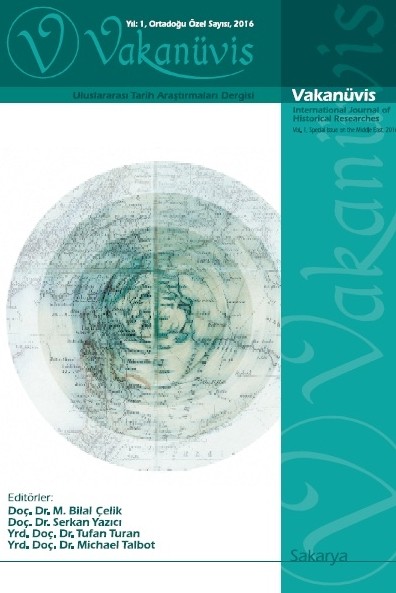Side’den Bir Grup Kilikya Tip 1 (Agora G199/Zemer 41) Amphora
Kilikya Tip 1, Agora G199, Zemer 41, Pinched Handle, Amphora.
A Group of Cilician Type 1 (Agora G199/Zemer 41) Amphoras from Side
Cilicia Type 1, Agora G199, Zemer 41, Pinched Handle, Amphora,
___
- Plinius. Naturalis Historia. (Ed: C. Mayhoff). 1892-1909.
- Strabon. Geographika. Antik Anadolu coğrafyası. Kitap: XII-XIII-XIV. (Çev. A. Pekman). İstanbul: Arkeoloji ve Sanat Yayınları, 2000.
- Akdoğu Arca, Ebru, Gökalp, Nuray, Tüner Önen, Nihal, “Pamphylia Bölgesinin Mısır ve Kıbrıs ile Olan İlişkileri”, OLBA, 19 (2011), s. 281-312.
- Autret, Caroline, “Cyprus and Cilicia: Amphora Production, Trade and Relations in the Early Roman Era”, Cyprus An Island Culture, (2012), (Ed: A. Georgiou), Oxbow Books, s. 251-267.
- Autret, Caroline, Rauh, Nicholas K. “Roman Amphora Production in Western Rough Cilicia”, Olive, Oil and Wine Production in Anatolia During the Antiquity, International Symposium Mersin-Turkey, 06-08 November 2008, (2010), İstanbul, s. 109-122.
- Bilir, Ahmet, “Roma İmparatorluk Dönemi ve Geç Antik Çağ’da Kilikya Bölgesi’nde Amphora Üretimi”, Prof. Dr. Recep Yıldırım’a Armağan, (2017), (Ed: P. Pınarcık, B. Gökçe, M. S. Erkek, S. Coşğun Kandal), Ankara, s. 219-255.
- Büyüközer, Aytekin, Knidos Limanları, Basılmamış Doktora Tezi, Konya 2012.
- Grace, Virginia, “Imports from Pamphylia”, Études déliennes. Bulletin de correspondance Hellénique, (1973), s. 183-208.
- Hayes, John W. Paphos III. The Hellenistic and Roman Pottery, Nicosia, 1991.
- Komar, Paulina, “Wines from Cyprus and Cilicia in Antiquity: Taste and Trade”. Electrum, 23 (2016), s. 155-185.
- Lund, John, “The pinched-handle transport amphorae as evidence of the wine trade of Roman Cyprus”. Acts of the third international congress of the Cypriot studies, (Nicosia, April 16-20 1996), Vol. A Ancient section, (2000), (Ed: G. K. Ioannidis and S. A. Hadjistyllis), Nicosia: Cypriot Studies, s. 565-578.
- Nollé, Johannes, Side im altertum. Geschichte und zeugnisse I. Bonn, 1993.
- Özcan, Fatma Çağım, Side Kentsel ve III. Derece Arkeolojik Sit Alanı 779-14, 798-1, 785-19 ve 785-18 Kazılarının Seramikler Işığında Değerlendirilmesi, Basılmamış Doktora Tezi, Eskişehir 2022.
- Rauh, Nicholas K., Slane, K. W., “Possible Amphora Kiln Sites in Western Rough Cilicia”, Journal of Roman Studies, 13 (2000), s. 319-330.
- Rauh, Nicholas K., Townsend, R. F., Hoff, M., Wandsnider, L., “Pirates in the Bay of Pamphylia: An archaeological inquiry”, The Sea in Antiquity, (2000), (Ed: G. J. Oliver, R. Brock, T. J. Cornell, S. Hodkinson), British Archaeological Reports International Series 899, Oxford, s. 151-180.
- Robinson, Henry S., The pottery of the Roman period: Chronology. The Athenian Agora. Vol. 5. Princeton/New Jersey: The American School of Classical Studies at Athens, 1959.
- Slane, Kathleen W., “Amphoras -Used and Reused- at Corinth”, Transport Amphorae and Trade in the Eastern Mediterranean. Acts of an International Colloqium at the Danish Institute of Athens, 26-29 September 2002, (Monographs of the Danish Archaeological Institute at Athens, Vol. 5), (2004), (Ed: J. Lund, J. Eiring), s. 361-369.
- Şenol, Ahmet Kaan, “AETAM’da Bulunan Amphoraların Tipolojisi”, AETAM’da (Arslan Eyce Taşucu Amphora Müzesi) Bulunan Ticari Amphoralar ve Akdeniz’de Ticaretin İzleri, (2009), (Ed: A. K. Şenol), Mersin, s. 100-319.
- Williams, D. F., Lund, John, “Petrological Analyses of “Pinched Handle” Amphorae from the Akamas Peninsula, Western Cyprus”, The Transport Amphorae and Trade of Cyprus. (2013), (Ed: M. L. Lawall, J. Lund), Aarhus Universitetsforlag, Gösta Enbom Monographs. Vol. 3, s. 156-164.
- Williams, Caroline, Anemurium: The Roman and Early Byzantine Pottery, Belgium: Pontifical Institute Mediaeval Studies, 1989.
- ISSN: 2149-9535
- Başlangıç: 2016
- Yayıncı: Serkan YAZICI
Doğu ve Batı Yaşam Tarzında Çini Tabaklar: Benzerlikler Ve Farklılıklar
Osmaneli (Lefke) ve İlk Uçak Postası
Tabako Osmanlı Anonim Şirketinin Teşkili
Türkiye’de Tarihçilik ile İlgili Lisansüstü Tezlerin İncelenmesi
Osmanlı Ebeveynleri İçin Rehber Kitap: Çocuklarımızı Nasıl Büyütmeliyiz?
Anzak Günü ve Anma Törenlerinin Avustralya’daki Tarihi Gelişimi
